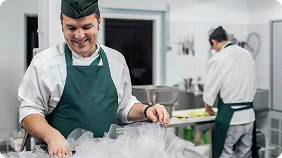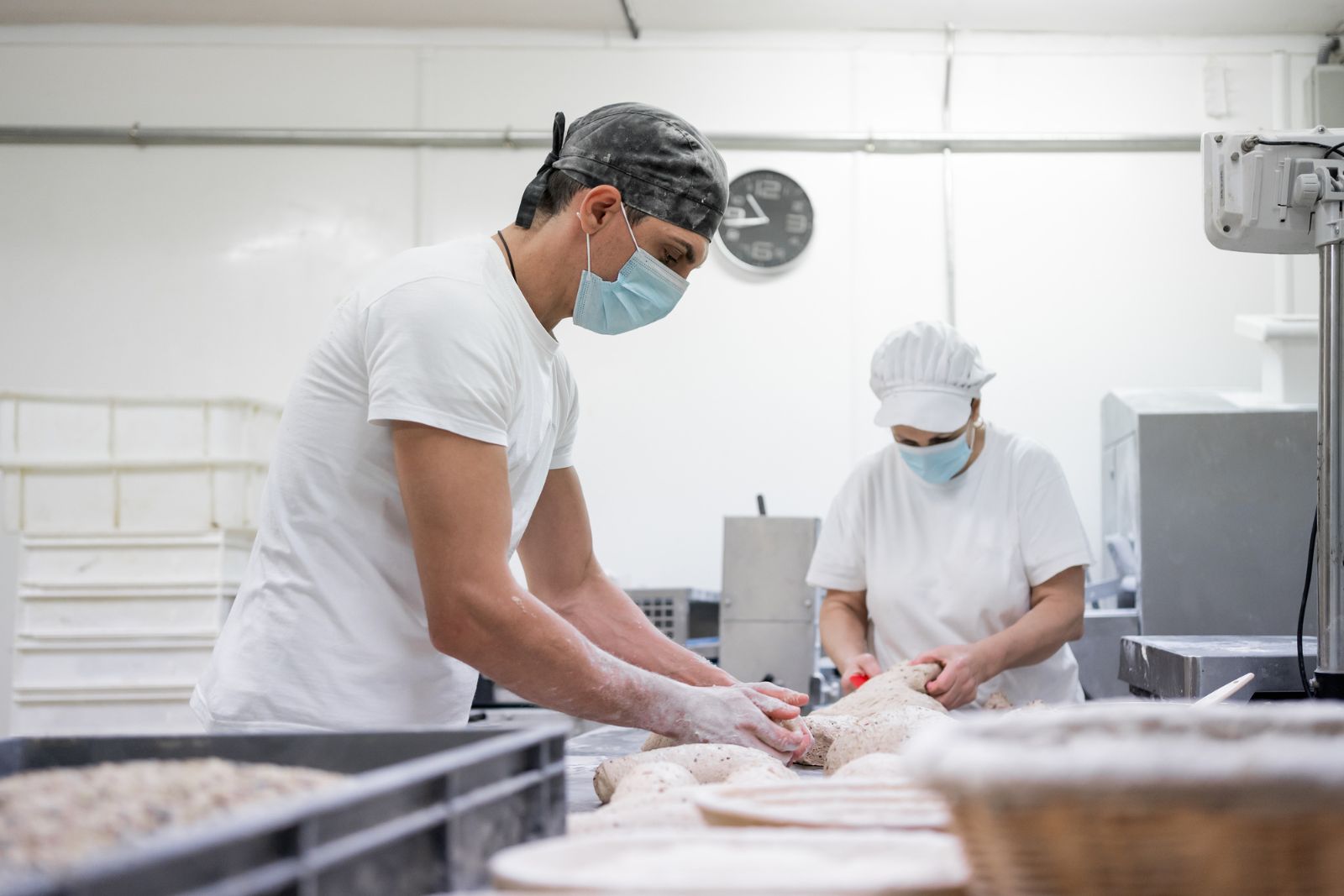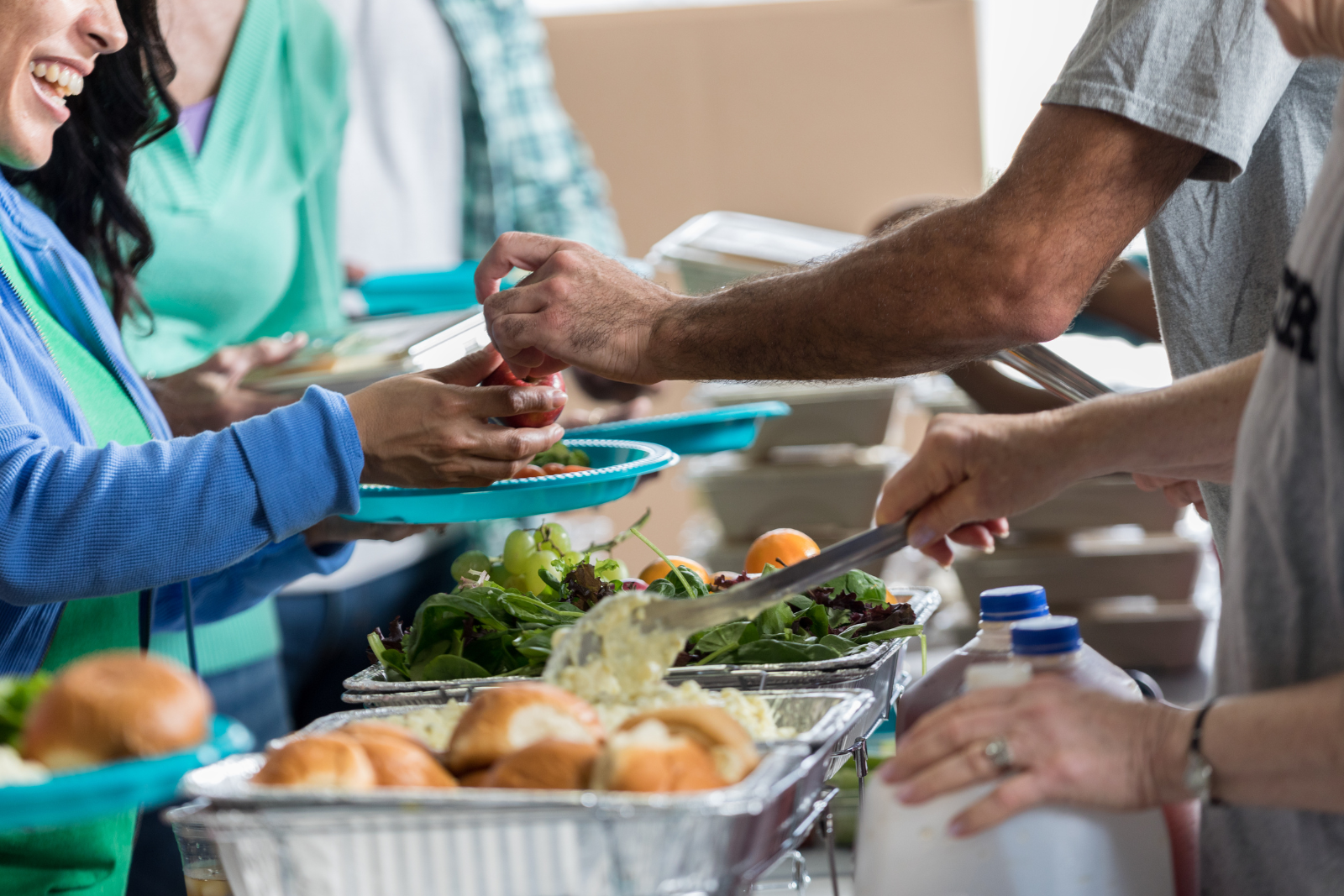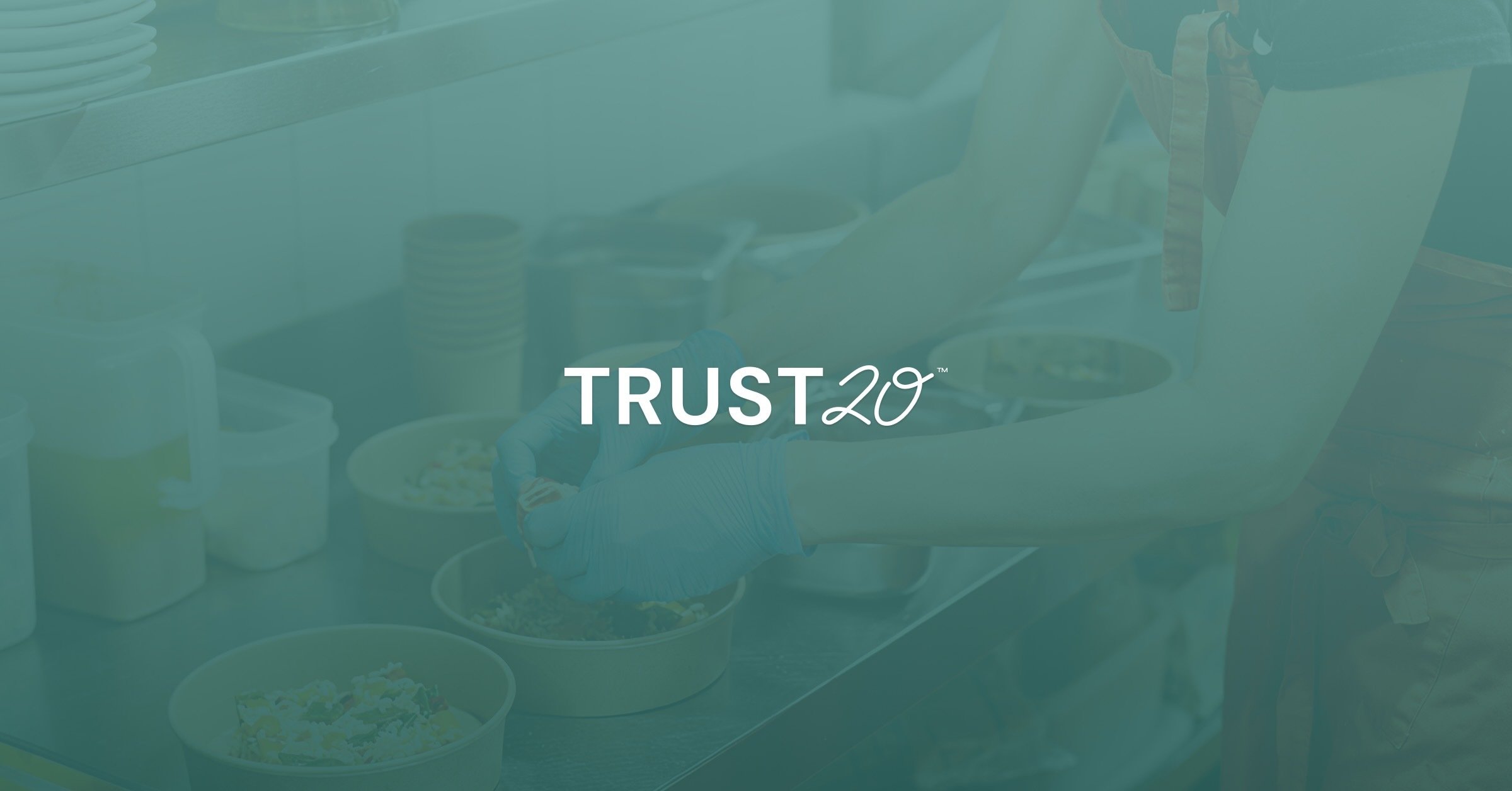According to the Centers for Disease Control (CDC), raw and undercooked meats are at the top of the list of foods that can cause food poisoning–making safe handling of raw meat a critical component of your food safety practices.
We all know cleanliness is next to godliness, which may make you think you need to rinse everything in the food chain that passes through your doors in order to prevent a foodborne illness from contaminating your kitchen.
However, cleaning and/or rinsing isn’t always necessary. In fact, instead of preventing cross-contamination, it could actually become the source of it.
In this article, we’ll take a look at which foods should be rinsed or washed, which should be left alone, and why. We’ll focus specifically on TCS foods–as they need specific temperature control to remain safe to eat–and break down:
Am I supposed to wash raw meat, poultry, or seafood?
How is meat cleaned during processing?
How do I eliminate the bacteria from raw meat?
Where else should I wash to avoid cross-contamination?
Quick look at what to wash when for food safety
Am I supposed to wash raw meat, poultry, or seafood?
The short answer is no. As we discuss raw meat, remember that red meat, poultry, and seafood go under one umbrella, as the same rules apply to all of the above.
The United States Department of Agriculture (USDA) researched washing raw meat and found that it actually increases the risk of cross-contamination in your kitchen.1 Of course, there is a reason people believe they are supposed to wash raw meat. Back when people slaughtered and prepared their own food, rinsing was necessary to remove impurities. In modern times, the meat has already been cleaned during processing.
Today, it is completely unnecessary to rinse, strain, or soak raw meat in water–and you should never use soaps or chemicals on raw meat, as they can make them unsafe to eat.
One of the reasons you should not wash raw meat is that it will spread bacteria. If you rinse raw meat under running water, the juices from the meat can splatter outside the sink on the counter or onto utensils or even nearby food. In fact, water can splash bacteria up to three feet surrounding your sink–and one in seven people who cleaned their sink after washing chicken still had germs in the sink!2,3
So, what makes it unnecessary to wash raw meat? How can you trust that the meat from your supplier is safe for consumption? Let’s look at how meat is processed before it arrives at your door.
How is meat cleaned during processing?
Suppliers have built layered procedures to process and clean their meat before it goes out for distribution. These procedures are based on the guidelines developed by the USDA and are intended to help prevent cross-contamination and maintain food safety.
Some facilities use a high-pressure sprayer, with water at a temperature of at least 170°F, to wash their meats.12 The water may contain acetic or lactic acid to help kill all microorganisms.
In addition to physically cleaning their meat, most facilities dedicate an entire shift each day to proper cleaning and sanitizing procedures.3 They also implement standard operating procedures (SOPs) for their staff that help them maintain proper hygiene and glove protocols and monitoring equipment that helps keep the facility clean and sanitized (including the floors, walls, and ceiling).3
Once the meat has been cleaned and processed, it must pass inspection. The USDA Food Safety and Inspection Service (FSIS) oversees a rigorous inspection. According to FSIS, federal inspection personnel must be present at all times during livestock slaughter and operations and for at least part of each shift during which there is further processing of meat products.5
The inspection includes verification that there is humane handling of animals and that they are processed in a way that is safe for human consumption. Inspectors also check processing facilities to ensure that staff follow the SOPs and work to maintain proper sanitation. More inspections must occur if the meat moves to another facility for further processing and packaging.
How do I eliminate the bacteria from raw meat?
So, if meat is cleaned during processing and you don’t need to clean it further after it enters your kitchen, how do you eliminate pathogens from raw meat? Safely handling raw meat will help prevent cross-contamination, but properly cooking meat to the correct temperature, as recommended by the USDA, will eliminate the bacteria commonly found on raw meat.
Poultry is only safe to eat when cooked to an internal temperature of 165°F. Beef, veal, lamb, pork, seafood, and shellfish must be cooked to an internal temperature of 145°F. Why? Because that’s what it takes to kill the dangerous bacteria.7 Always use a thermometer to measure the internal temperature of your foods as you cook to ensure they reach the proper temperature.
What foods should be rinsed?
If it is a shock that meat shouldn’t be cleaned, then perhaps you’re questioning all your cleaning and rinsing procedures. As a general rule, do not wash food with soap or chemicals because they can contaminate it, making it unsafe to eat. But beyond that, let’s look at other TCS foods to clarify what we wash and leave alone.
|
Eggs |
No, do not rinse eggs under running water. Commercially packaged eggs have already been cleaned and sanitized during processing. If you rinse the eggs prior to using them, you increase the risk of contamination because the wash water can seep into the pores of the eggshell.8 |
|
Tofu |
There are no USDA guidelines for tofu. Tofu can be safely rinsed under running water. It can also be eaten raw.9 |
|
Lentils |
Lentils can be safely rinsed, and instructions often include this step so as to remove any debris or pebbles.10 |
|
Dry Beans |
Like lentils, dry beans should be safely rinsed to clear out any debris or pebbles. Then, dry beans need to be soaked prior to cooking.11 |
|
Rice |
Rice can be safely rinsed. |
|
Barley |
There is no need to rinse barley. |
|
Produce |
You should rinse produce under running water to remove dirt, but do not use soap as its residue could be ingested. Always make sure you have cleaned and sanitized the sink before you rinse your produce. |
What else should I wash to avoid cross-contamination?
Now that you’ve reviewed what foods should and should not be washed, let’s review what else SHOULD be washed and sanitized to promote food safety. Remember, the ultimate goal is to avoid cross-contamination and cross-contact to protect your customers, coworkers, and yourself.
Hands
Handwashing will always be critical to eliminating bacteria that could contaminate your kitchen–especially after handling raw meat! Always cover your hands in soap, rinse them well, and dry them completely before moving on to your next task to prevent cross-contamination.
Food contact surfaces
Food contact surfaces, like utensils, dishes, and cutting boards, should always be cleaned and sanitized between uses. There are five steps to properly cleaning food contact surfaces:
- Scrape or remove food from surfaces.
- Clean with soap or detergent and hot water.
- Rinse the surface with warm water to remove the solution.
- Sanitize the surface to kill any remaining bacteria.
- Allow the surface to air dry.
Non-food contact surfaces
Surfaces that do not typically have contact with food, like countertops and tables, also require cleaning and sanitizing to prevent the spread of pathogens. There are three steps to cleaning non-food contact surfaces:
- Scrape or remove food from surfaces.
- Clean with soap or detergent and hot water.
- Rinse the surface with warm water to remove the solution.
Quick look at what to wash when for food safety
It can be hard to keep track of all the different “whats” and “whens” in the kitchen. Review the cheat sheet below for a quick summary of what to wash, rinse, soak, or sanitize–and when.
|
Wash |
Rinse |
Soak |
Sanitize |
|
|
Raw Meat |
x |
x |
use caution |
x |
|
Raw Poultry |
x |
x |
use caution |
x |
|
Eggs |
x |
x |
x |
x |
|
Raw Seafood |
x |
x |
use caution |
x |
|
Tofu |
x |
optional |
optional |
x |
|
Lentils |
x |
✓ |
optional |
x |
|
Dry Beans |
x |
✓ |
✓ |
x |
|
Rice |
x |
optional |
optional |
x |
|
Barley |
x |
optional |
optional |
x |
|
Produce |
x |
✓ |
x |
x |
|
Hands |
✓ |
✓ |
x |
x |
|
Food Contact Surfaces |
✓ |
✓ |
x |
✓ |
|
Nonfood Contact Surfaces |
✓ |
✓ |
x |
✓ |
The Takeaway
TCS foods, like raw meat, poultry, and seafood, require a lot of effort to prevent them from becoming contaminated. However, that does not mean washing and rinsing them should always be a part of the preparation process. Knowing the food safety best practices surrounding which foods to clean and which to simply begin cooking will help protect your customers from the risks of cross-contamination and foodborne illnesses.
Sources:
- USDA: Washing Food: Does it Promote Food Safety?
- USDA: To Wash or Not ot Wash
- Michigan State University: An inside look at how meat and poultry plants clean everything
- USDA: Consumer Research
- Sample: Sanitation SOPs
- USDA: Summary of Federal Inspection Requirements for Meat Products
- USDA: Safe Minimum Internal Temperature Chart
- USDA: Should eggs be washed before they are used?
- USDA: What Do I Do With Tofu?
- USDA: What to do with Lentils?
- USDA: What Do I Do With Beans?
- Pro Sonix: Meat and Poultry Processing






.png)

.png)
